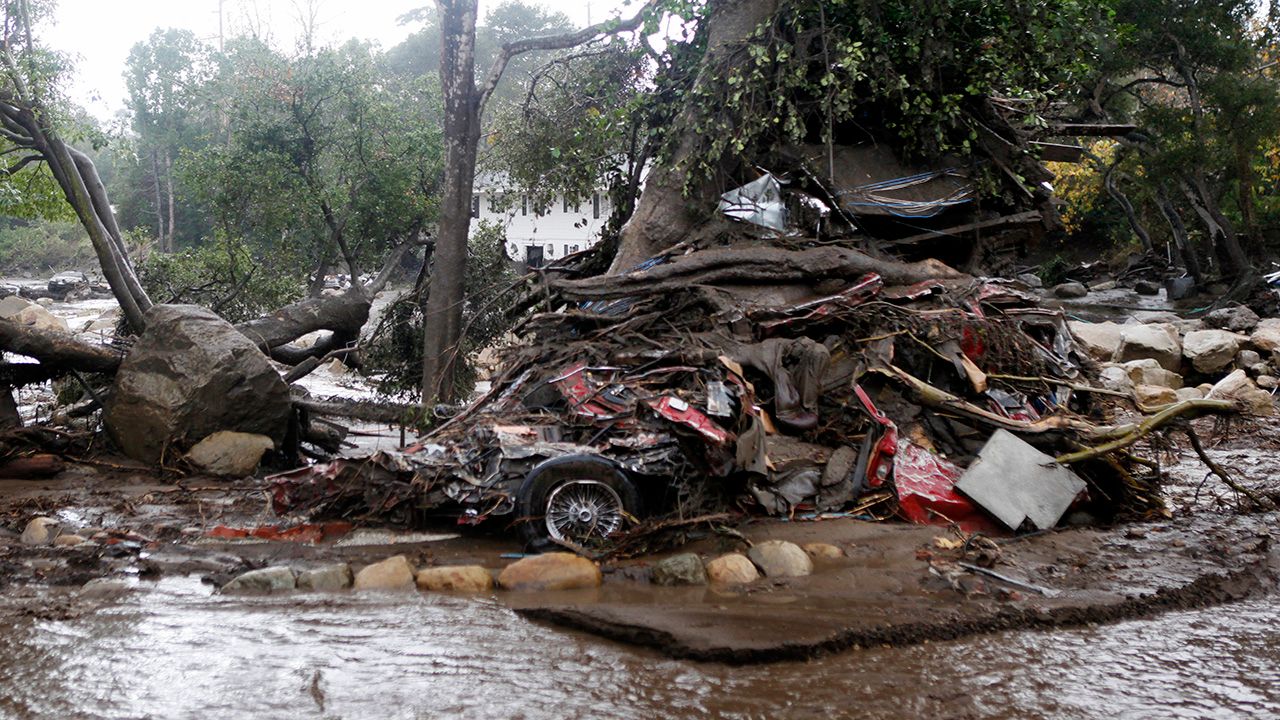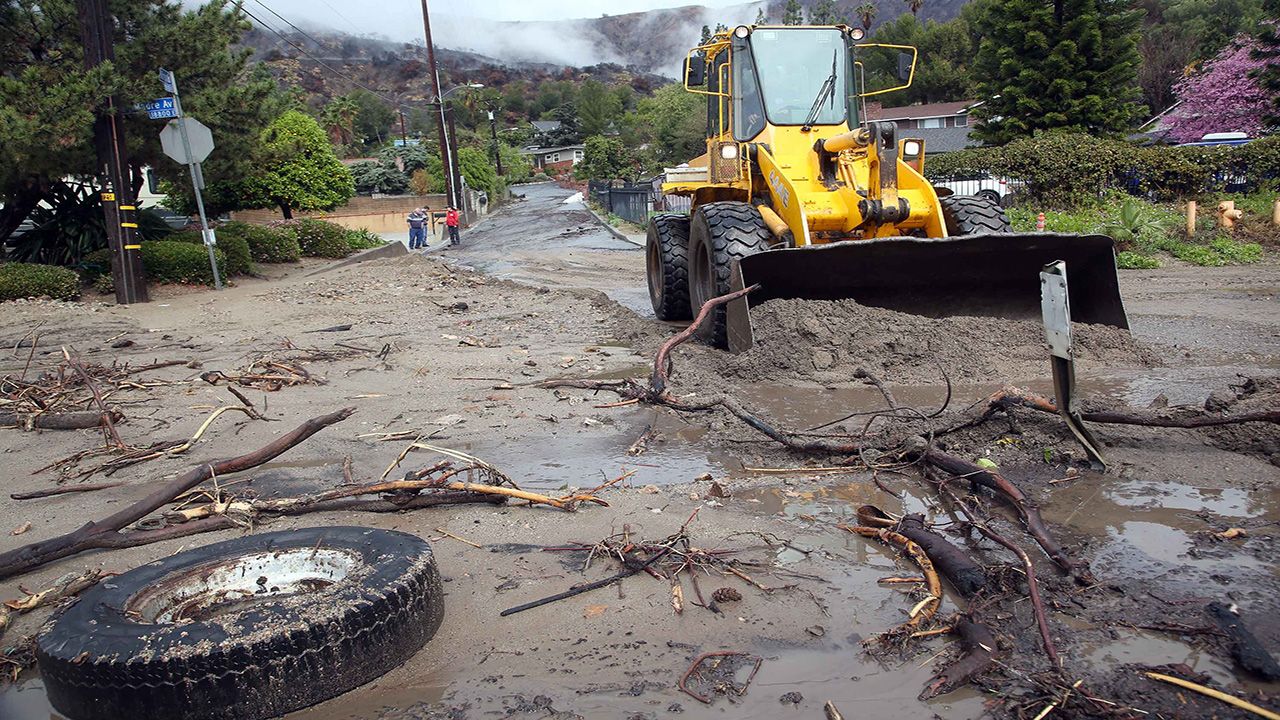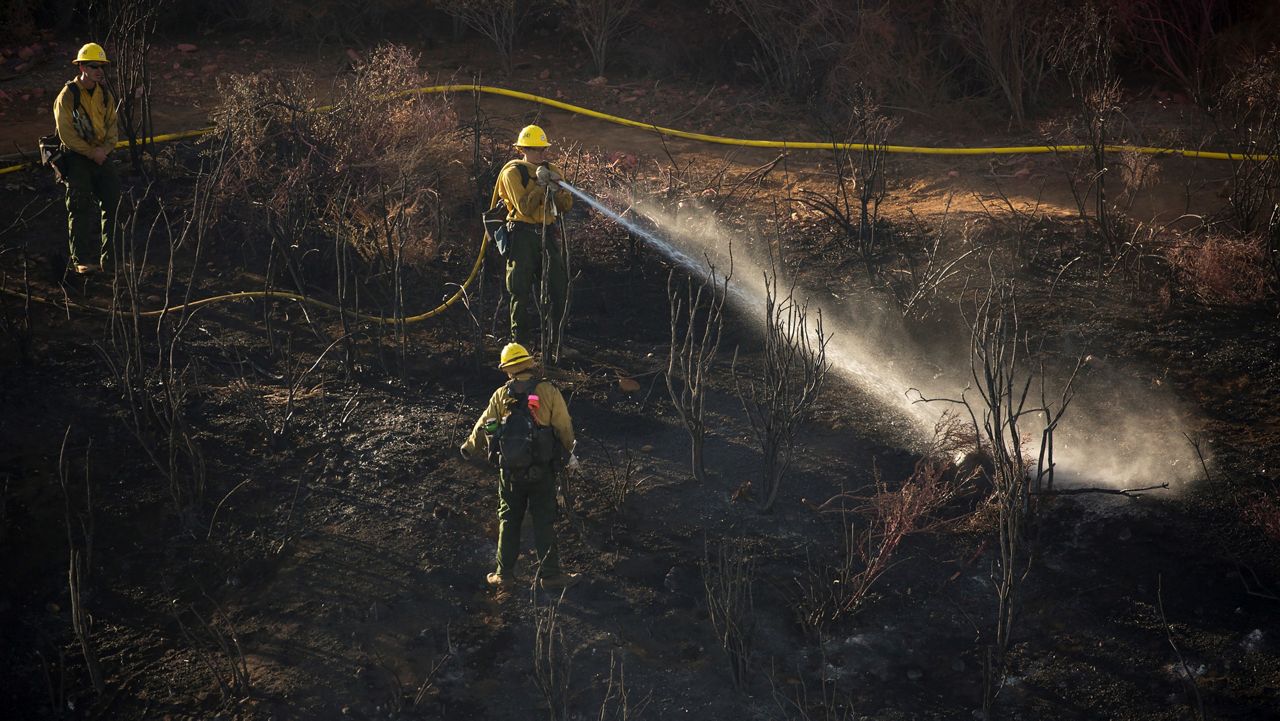With the wet season underway across the western U.S., debris flow and flash flooding can become constant with the recent wildfires creating burn scars.
After crews extinguish a fire, the land becomes stripped of all vegetation and all that is left is a layer of soil.
Because there is no vegetation, there is nothing to help hold the soil in place when it rains, making the area susceptible to debris flow.
Debris flow is a moving mass of the mud, soil, and small objects such as rocks that make up the burn scar. It typically slides down a steep slope.
A flash flooding risk can also increase with a burn scar.

After a wildfire scorches the land, hydrophobic soil replaces what was once healthy soil.
Hydrophobic soil forms when fires burn organic material and that material seeps into the empty spaces of the soil. This causes the soil to become impermeable and water to run off.
This allows flash flooding to take place.
When new soil and debris gather on top of the hydrophobic soil, the heavy downpours can take this material downhill, creating debris flow.
Debris flow can turn into an extremely dangerous event and cause damage to buildings, bridges, and roads and reach up to a few miles away from the burned area.

If you're near a burn scar and you know a storm with heavy rainfall is heading to your area, do not wait until flash flood warnings are in effect to prepare.
Flash flooding can take place over a burn scar before authorities can issue a warning.
Head to a safe place before the thunderstorm arrives. You may have little time to move to a safe place once the rain settles in.
It is also important to note that burn scars can take years to recover the vegetation that they lost. Have a plan in place if you live in a wildfire-prone area.



